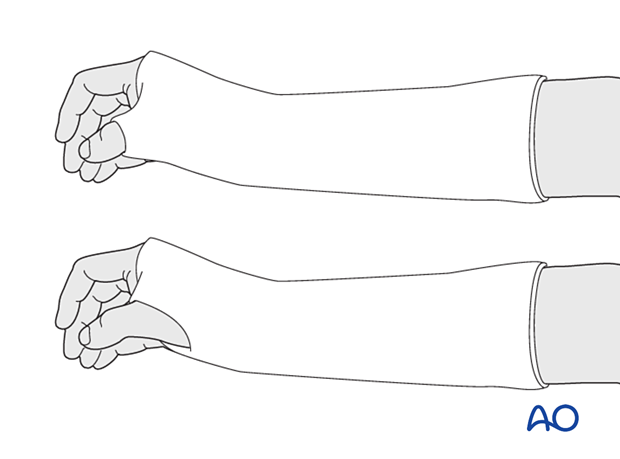Immobilization with a cast
1. General considerations
Introduction
Casting of the injured wrist is recommended for:
- The support of damaged tissues to permit the early (inflammatory) healing phase to be established without repeated trauma
- The reduction of postoperative swelling, which otherwise impedes tissue perfusion
- The restoration of graduated exercises appropriate for the phase of healing
These factors contribute to optimal pain management. This is essential for the appropriate restoration of movement and reestablishment of functional activities.
The specific casting type is determined by the particular injury pattern.
The wrist is immobilized in a below-elbow cast, with the wrist slightly extended and the proximal phalanx of the thumb included in a position of slight opposition (“scaphoid cast”).
The alternative is a below-elbow cast, with the wrist in neutral or slight extension but the thumb is free.
The selection is surgeon’s preference as there is not enough evidence available to distinguish the advantage of one over the other.

2. Cast application
Padding
Pad the arm and hand to avoid pressure sores, especially on the distal ulna and styloid process of the radius.

Plaster application
Apply the circumferential plaster in a standard manner, starting at the fracture level.
The wrist should be in slight dorsiflexion.

Make sure that the plaster does not extend too far distally, both at the levels of the metacarpophalangeal (MCP) joints of the fingers and the interphalangeal (IP) joint of the thumb. The cast must allow complete movement of these joints.














